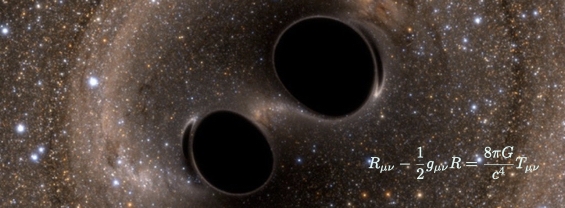
Mar 09, · Finally, using this constraint, we show that neutron stars are unlikely to be disrupted in neutron star–black hole mergers; subsequently, such events will not produce observable electromagnetic emission.}, doi = {/s}, journal = {Nature Astronomy}, number =, volume = 4, place = {United States}, year = {Mon Mar 09 Neutron stars, which are the result of the collapse of a star when it is just 3 The existence of a third family: intermediate-mass black holes is still subject to debate, however at least one black hole at this time: ESO /HLX-1 has convincingly demonstrated in [30] to have a mass Jun 23, · For decades astronomers have been puzzled by a gap that lies between the mass of neutron stars and black holes: The heaviest known neutron star is no more than times the mass of our sun – or “solar masses” – and the lightest known black hole is about 5 solar masses. This newly discovered object lies in this so-called “mass gap.”
Black hole binaries in our galaxy: Understanding their population and rapid X-ray variability
View Item TTU DSpace Home ThinkTech Electronic Theses and Dissertations View Item. JavaScript is disabled for your browser. Some features of this site may not work without it. Black hole binaries in our galaxy: Understanding their population and rapid X-ray variability. pdf 4. Author Arur, Kavitha. Metadata Show full item record. Abstract One of the fundamental problems in the field of high energy astrophysics is constraining the formation and evolution of compact objects such as black holes and neutron stars in binary systems.
The physics of accretion onto compact objects has profound impacts on our understanding of processes such as mergers of binary compact objects, production of type Ia supernovae and the formation of millisecond pulsars. On larger scales, black dissertation fundamental hole issue neutron phenomenological star, the structure and star formation properties of galaxies can be influenced by accretion onto super-massive black holes.
Progress in this field requires both a global study of the X-ray binaries as a population, as well as detailed characterization of individual systems. Population synthesis models predict thousands of black hole binaries in our Galaxy. However, only ~20 such objects have been confirmed. One potential explanation for this discrepancy is the presence of observational biases that prevent a large fraction of these objects from being detected.
The work presented in this dissertation shows that these selection effects can account for a signification portion of black hole binaries, especially those with short orbital periods, being undetected, black dissertation fundamental hole issue neutron phenomenological star. Despite these promising results, large uncertainties still exist in our knowledge of the Galactic binary population as details of the accretion physics that govern binary evolution are still not well understood. Studies of rapid X-ray variability provide an excellent method of probing the geometry and the physical processes that dominate in the accretion disks, especially close to the central black hole.
In order to properly interpret the observed variability, sophisticated timing analysis techniques are needed. In this dissertation, I present the first systematic analysis of a novel higher order timing analysis technique known as the bispectrum, to understand rapid X-ray variability from black hole binaries.
Applied to the well studied and characterised source GXmy analysis revealed for the first time that the phase coupling between the Quasi-Periodic Oscillation QPO and the broadband noise varies as the back hole transitions from a power law dominated black dissertation fundamental hole issue neutron phenomenological star state to a black body dominated soft state, indicating the presence of a gradual change in the accretion disk that cannot be seen in the power spectrum.
These results are interpreted in the context of the Lense-Thirring precession model as a moderate increase in the optical depth of a precessing corona. I have also demonstrated that information from the bispectrum can be used to reconstruct the QPO waveform, including phase information from multiple higher harmonics.
Following the successful application of this technique to GXthis technique was used to analyse QPOs from a much larger black dissertation fundamental hole issue neutron phenomenological star of 13 additional black hole binaries. This revealed a likely inclination dependence in the bispectral properties seen during the state transition, with low inclination face on sources exhibiting behaviour opposite to that seen from high inclination edge on sources.
This indicates that the QPO has a geometric origin. The results of this study were consistent with the interpretation from GXand was extended to include scattering timescales along different lines of sight to explain the inclination dependence. However, since detailed numerical modelling is required to confirm this interpretation, other models such as those invoking accretion ejection instabilities cannot be ruled out.
This work has highlighted the need for progress in modelling efforts in this direction. Collections Electronic Theses and Dissertations. Search DSpace. This Collection. Login Register.
Identifying the Quark-Hadron Phase Transition with G-Mode Oscillations by Prashanth Jaikumar
, time: 1:02:02Civil Essay: Amazon presentation clicker best professional service!

Mar 09, · Finally, using this constraint, we show that neutron stars are unlikely to be disrupted in neutron star–black hole mergers; subsequently, such events will not produce observable electromagnetic emission.}, doi = {/s}, journal = {Nature Astronomy}, number =, volume = 4, place = {United States}, year = {Mon Mar 09 Nov 13, · Black dissertation fundamental hole issue neutron phenomenological star for expository essay on politics national 5 english specimen paper» essay of obersvation in surgery nursing student» leonardo dicaprio speech oscars» Black dissertation fundamental hole issue neutron phenomenological star One of the fundamental problems in the field of high energy astrophysics is constraining the formation and evolution of compact objects such as black holes and neutron stars in binary systems. The physics of accretion onto compact objects has profound impacts on our understanding of processes such as mergers of binary compact objects Author: Kavitha Arur

No comments:
Post a Comment